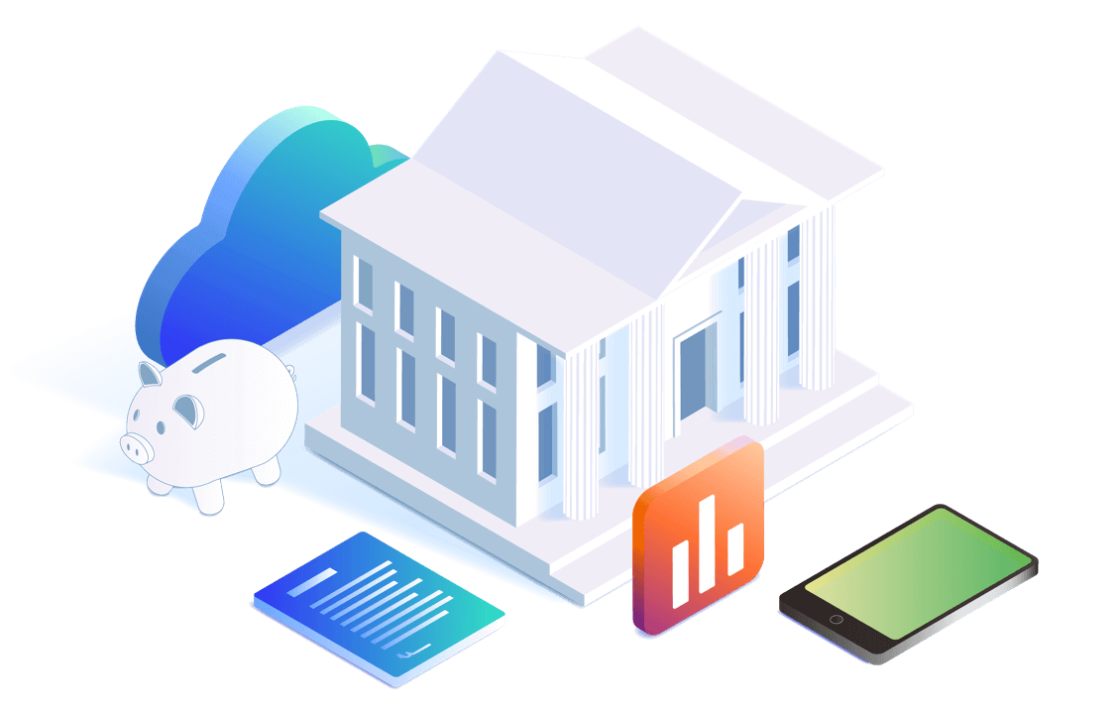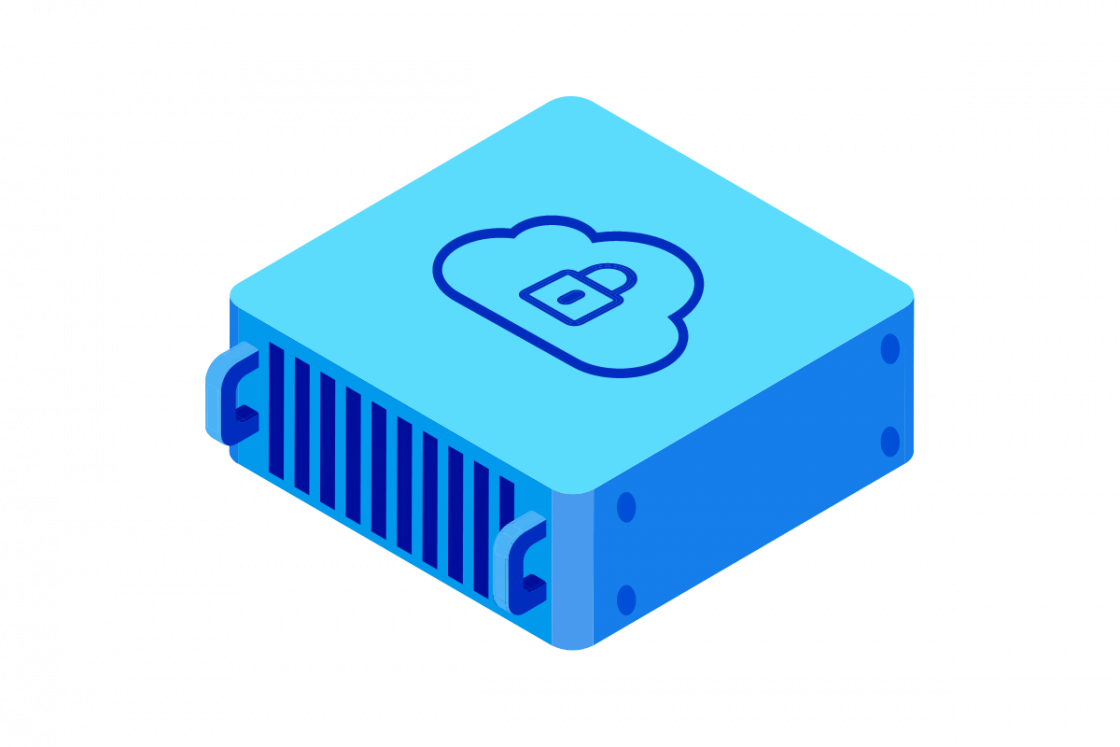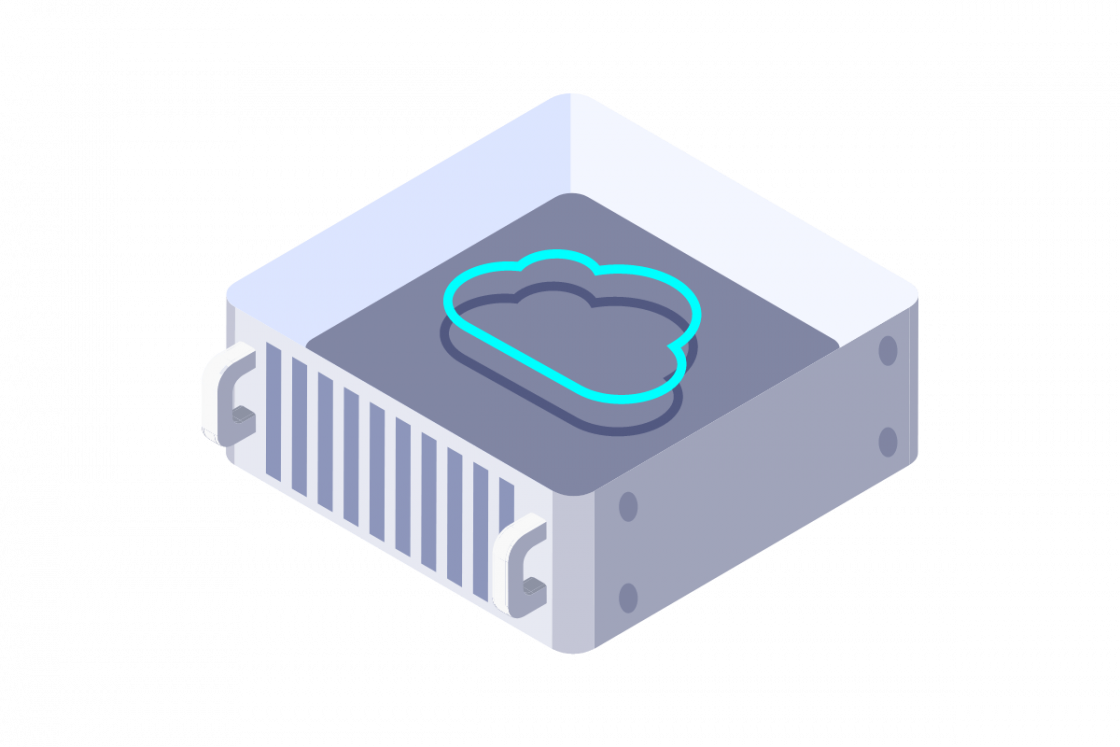What is Ransomware?
Ransomware has become one of the most pervasive and damaging cyber threats in the digital age. As cybercriminals and attack strategies grow more sophisticated, understanding this menace is crucial for individuals, businesses, and organisations worldwide.
This page delves into the intricacies of ransomware, exploring its attack and access mechanisms, impacts on files and data, and strategies for defense. We'll also examine how it affects modern cloud computing data environments and highlight effective data security solutions to safeguard your infrastructure.

What is Ransomware?
Ransomware is a type of malicious software, or malware, designed to deny access to a computer system or data until a ransom is paid.
It typically encrypts files on the victim's device, making files inaccessible, and demands payment—often in cryptocurrency—for the decryption key. The term "ransomware" combines "ransom" and "malware," reflecting its extortion-based nature.
This data security threat has evolved significantly since its early appearances in the late 1980s. The first known ransomware, the AIDS Trojan, was distributed via floppy disks and demanded payment for a supposed software lease.
Today, ransomware attacks of organisations and individuals are far more advanced, leveraging encryption algorithms that are nearly impossible to crack without the key for the files. Attackers often target high-value victims like corporations, hospitals, and government agencies, where downtime can cause massive financial and operational losses.
Exploiting Vulnerabilities
At its core, ransomware exploits vulnerabilities in access systems, human behavior, or software. Once inside, it spreads access rapidly, encrypting data and sometimes exfiltrating it for additional leverage. Payments are usually demanded in Bitcoin or other cryptocurrencies to maintain anonymity. However, paying the ransom doesn't guarantee recovery of files; in many cases, victims receive faulty keys or face repeated demands.
Ransomware isn't just a technical issue—it's an attack-driven business model for cybercriminals. Groups like REvil and Conti operate like corporations, offering ransomware-as-a-service (RaaS) to affiliates who carry out data attacks.
This democratisation has led to a surge in incidents, with global damages estimated in the billions annually. Understanding ransomware starts with recognising it as an intersection of technology, economics, and psychology, where fear of loss of user files and data drives victims to comply.
How Does Ransomware Work?
Ransomware operates through a multi-stage access process that begins with infection and culminates in extortion of organisations and individuals. The journey starts when the malware gains entry into a system, often by help of phishing emails, malicious attachments, or compromised websites. Once executed, it establishes persistence, ensuring it remains active even after reboots.
The core mechanism is encryption. Ransomware uses symmetric or asymmetric encryption—commonly AES or RSA algorithms—to lock user files. Asymmetric encryption involves a public key to encrypt data and a private key, held by the attacker, to decrypt it. This makes brute-force decryption infeasible for most victims due to the computational power required.
After access and encryption, a ransom attack note appears, typically in a text data file or on the desktop, detailing payment instructions and deadlines. Some variants include countdown timers to help heighten urgency. Advanced ransomware may also disable data backups, spread to networked devices, or steal data for double extortion, threatening to leak sensitive data and information if the attack ransom isn't paid.
The attack lifecycle includes reconnaissance, where attackers identify cybersecurity targets that might pay; delivery, through vectors like email or drive-by downloads; execution, where the payload runs; and monetisation, via ransom collection. Post-payment, if the attacker honors the deal, they provide a decryption tool. However, many experts advise against paying, as it funds further crime and offers no guarantees.
Types of Ransomware Attacks
Ransomware cyberattacks comes in various forms, each with unique characteristics and targets. The most common is crypto-ransomware, which encrypts user files and demands payment for the key. Examples include WannaCry and Ryuk, which have crippled organisations worldwide.
Locker ransomware, on the other hand, locks the user out of their device entirely, often by help of changing passwords or restricting access to the operating system and is a real endpoint security risk. This type is less common today but was prevalent in early mobile ransomware targeting Android devices.
Scareware masquerades as legitimate security software, claiming the system is infected and demanding payment for "cleanup." It's more of a scam than true ransomware, as it doesn't encrypt data but relies on deception.
Double extortion ransomware adds data access breaches to encryption. Attackers exfiltrate sensitive information and threaten to publish it on dark web leak sites if demands aren't met. Clop and Maze pioneered this approach, increasing pressure on victims.
Ransomware-as-a-service (RaaS) isn't a type but a distribution model where developers provide tools to affiliates for a cut of the profits. This has lowered the barrier to entry, enabling less technical criminals to launch attacks on user files.
Emerging variants include wiper ransomware, which pretends to encrypt but actually destroys data of both organisations and individuals, and targeted ransomware focusing on specific industries like healthcare or finance. Mobile ransomware targets smartphones, while IoT ransomware exploits smart devices for help with the attack. Each type adapts to new technologies, making classification an ongoing challenge.
Impact of a Ransomware Attack
The consequences of a ransomware cyber attack extend far beyond financial loss. Immediate impacts include operational downtime, where businesses can't access critical systems, leading to halted production, missed deadlines, and lost revenue. For instance, hospitals may delay surgeries, putting lives at risk.
Financially, costs encompass ransom payments, recovery efforts, legal fees, and regulatory fines. Even if no ransom is paid, restoring systems from backups can be expensive, often requiring IT consultants and new hardware. Indirect costs include reputational damage, as customers lose trust in breached organisations.
Long-term effects of an attack involve user data and files loss if backup access is compromised, intellectual property theft, and increased insurance premiums. In regulated industries, attacks can trigger compliance violations, such as GDPR breaches in Europe, resulting in hefty penalties.
On a societal level, malware and ransomware disrupts essential services. Attacks on infrastructure, like pipelines or power grids, can cause widespread shortages. The psychological toll on employees and executives is significant, with stress from crisis management and fear of recurrence.
Quantifying impact is tricky, but reports suggest average costs per incident exceed millions, factoring in downtime and recovery. Small businesses and even individuals are particularly vulnerable, with many closing permanently after attacks. Overall, ransomware erodes confidence individuals have in digital systems, slowing innovation and increasing cybersecurity spending.
Ransomware Cyber Attack Vectors
Ransomware infiltrates systems through diverse access points, known as cyber attack vectors. Phishing emails remain the most common, where users are tricked into clicking malicious links or opening infected attachments. These emails often mimic trusted sources, using social engineering to bypass suspicion.
Exploiting software vulnerabilities is another key malware vector. Unpatched data systems, like those running outdated Windows versions, are prime targets. Drive-by downloads occur when visiting compromised websites, injecting as an attack the malware without user interaction.
Remote Desktop Protocol (RDP) attacks involve brute-forcing weak passwords to gain remote access. Once inside, attackers deploy ransomware across the network. Malicious insiders or supply chain compromises, where trusted vendors are breached, also facilitate entry.
USB drives and removable access media can spread ransomware in air-gapped files and data environments. Mobile apps from unverified sources pose risks to smartphones. Increasingly, attackers use watering hole attacks, infecting cyber websites frequented by cyber target groups.
Cloud misconfigurations, such as open data S3* buckets, provide entry to cloud-based assets. IoT devices with default credentials are exploited as footholds. Understanding these vectors emphasises the need for layered data security, from email filters to regular patching.
Real-World Ransomware Examples
History is rife with notorious ransomware incidents that highlight the threat's evolution. The 2017 WannaCry cyber attack exploited a Windows vulnerability, infecting over 200,000 computers across 150 countries. The attack crippled the UK's National Health Service, forcing hospitals to turn away patients. The worm-like propagation was halted by a kill switch, but not before causing billions in damages.
NotPetya, also in 2017, masqueraded as ransomware but was designed for destruction, targeting Ukraine before spreading globally. It hit companies like Maersk and FedEx, disrupting shipping and logistics worldwide. Estimated losses topped $10 billion.
In 2021, the Colonial Pipeline malware attack by DarkSide shut down a major US fuel pipeline, leading to shortages and panic buying. The company paid $4.4 million in ransom for its user files, though much was later recovered by authorities.
REvil's 2021 assault on JBS Foods halted meat production in multiple countries, raising food security concerns. The group demanded $11 million and was linked to Russian cybercriminals.
The 2023 MOVEit breach affected millions through a supply chain attack on file transfer software. Hospitals like Johns Hopkins faced disruptions. In 2024, a major attack on Change Healthcare disrupted US prescription processing, costing billions.
These examples show ransomware's shift from opportunistic to targeted, state-sponsored operations, affecting critical infrastructure and daily life for organisations and individuals.
Detection and Prevention Strategies
Detecting ransomware early can help mitigate cyber attack damage. Behavioral analysis tools monitor for unusual activity, like rapid file encryption or network scanning. Anomaly detection in endpoints flags suspicious cyber threat processes.
- Security hygiene: Prevention starts with robust cybersecurity hygiene. Regular software updates patch known vulnerabilities. Multi-factor authentication (MFA) secures accounts against credential stuffing.
- Extensive training: Employee training combats phishing, teaching recognition of suspicious emails. Email gateways with sandboxing detonate attachments safely. Network segmentation limits lateral movement, containing infections.
- Reliable backups: Backups are crucial for organisations and individuals—maintain offline, immutable copies tested regularly. Zero-trust architecture verifies every access request. Antivirus software with ransomware-specific modules provides real-time protection alongside firewalls.
- Complex mitigation: Advanced strategies that help include deception technology, using honeypots to lure attackers including comprehensive endpoint detection and response (EDR). AI-driven threat intelligence predicts and blocks emerging threats. Regular penetration testing identifies weaknesses and so does a next generation firewall and VPN use.
For organisations, incident response plans outline steps for detection and containment. Collaboration with cybersecurity firms enhances defenses. Prevention is multifaceted, combining technology, processes, and people.
How to Respond and Recover from Ransomware
Responding to ransomware requires that organisations have a structured business incident response approach to minimise harm to user files and systems. First, isolate infected cyber systems to prevent spread—disconnect from networks and power off if necessary.
- Assess the scope: Identify affected assets, network devices and data. Notify stakeholders, including legal teams and authorities like the FBI or local cyber units. Avoid paying the ransom, as it encourages crime and may not restore data.
- Stepped recovery: Recovery for organisations and individuals involves restoring from clean systems and backups. If none exist, consider decryption tools from cybersecurity firms, though success varies from network to network. Forensic business analysis determines the entry point to prevent recurrence.
- Response expertise: Engage cyber attack incident response experts for thorough cleanup, ensuring no backdoors remain. Update all systems and change passwords. Communicate transparently with customers and regulators to maintain trust.
- Review post incident: Post-recovery, conduct a lessons-learned review to strengthen defenses for systems. Insurance policies can cover costs, but coverage depends on preventive measures. Recovery is about resilience, turning a crisis into an opportunity for improvement.
It all comes together post incident – and it can lead to key changes including the installation of Two-factor authentication (2FA) or even MFA, across all authentication points.
Ransomware in the Cloud
Cloud environments introduce unique malware and ransomware risks due to their scalability and shared resources and demand pay. Attackers target a potential victim where there is misconfigured cloud storage, encrypting virtual machines or databases and systems. The shared responsibility model in use means providers secure infrastructure, but users manage application-level security.
Common threats for organisations include API key theft by an attacker, allowing unauthorised access to cloud resources. Ransomware can spread across multi-cloud setups too.
Double extortion pay is amplified in the cloud, with exfiltrated data easily leaked. Serverless architectures, while flexible, can harbor vulnerabilities in code dependencies.
Mitigation involves cloud-native tools in use like encryption at rest, access controls, and activity monitoring. Immutable storage prevents data overwriting. Regular audits ensure compliance with standards like ISO 27001.
As cloud adoption grows, ransomware for pay adapts, targeting business SaaS files and business information, applications and backup services. Protecting cloud assets requires vigilance, leveraging provider tools alongside best practices by the potential victim.
Emerging Trends in Ransomware Threats
As ransomware continues to evolve and create victim after victim, staying ahead of emerging trends is essential for effective network defense at all organisations. Cybercriminals are increasingly leveraging advanced technologies and systems to enhance the sophistication and reach of their attacks.
One prominent trend is the integration of artificial intelligence (AI) and machine learning into malware and ransomware operations. Attackers use AI to automate target selection, optimise phishing campaigns, and even develop adaptive malware and malvertising or even malspam that learns from detection attempts to evade security measures.
For instance, the AI-driven attacker ransomware in use in systems can analyse network behaviors in real-time, timing its encryption phase for maximum impact during off-hours when IT teams are less vigilant so there’s a bigger chance for ransom pay.
IoT and Networking
Another growing threat concern is the rise of ransomware targeting Internet of Things (IoT) devices. With billions of connected devices worldwide, from smart home systems to industrial sensors, these endpoints often lack robust security with nothing to protect some IoT devices.
Attackers exploit weak default passwords or unpatched firmware to gain footholds on files used, using IoT botnets to launch distributed network attacks or encrypt data across entire networks - all for pay. This trend has been evident in incidents where manufacturing plants faced shutdowns for pay due to compromised IoT controllers and information, amplifying operational disruptions.
Supply Chain Attacks
Supply chain attacks represent a sophisticated evolution in attack systems, where ransomware infiltrates through trusted third-party vendors. By compromising software updates or shared services, attackers can hit multiple organisations simultaneously, all soon seen in a news report.
The 2023 MOVEit incident exemplified this, affecting the use of IT for thousands of organisations through a single vulnerability in file transfer software. Such malware attacks in use underscore the interconnected nature of modern business ecosystems used and the threat these face, making vendor risk management a critical priority to protect business information.
Driven By Politics
Geopolitically motivated malware and ransomware targeting files is also on the rise, creating victim after victim, with state-sponsored groups using it as a tool for disruption or espionage against an organisation. These operations often blur the lines between cybercrime and cyberwarfare, targeting critical infrastructure like energy grids or financial systems through weak email security. In regions with heightened tensions, such attacks can escalate into broader conflicts, as seen in campaigns attributed to nation-state actors.
Mobile ransomware is adapting to the ubiquity of smartphones, exploiting app stores or SMS phishing to lock devices or steal personal data and business information. With the shift to remote work, bring-your-own-device (BYOD) policies create new vulnerabilities, allowing ransomware to bridge personal and corporate networks.
Countering New Threats
To counter these malware trends targeting data and files, organisations must use proactive measures to protect data. Investing in threat intelligence platforms that provide real-time insights into emerging tactics is vital. Zero-trust models, which assume no entity is inherently trustworthy, can mitigate risks from AI-enhanced or supply chain threats. Regular security audits in an organisation, combined with employee training on evolving phishing techniques, build resilience to protect business information.
Cloud-specific trends include attacks on serverless architectures, where malicious code injections exploit function-as-a-service models affecting victim after victim. Providers like OVHcloud are responding with enhanced monitoring tools for an organisation that detect anomalous behaviors in the cloud environments used.
Looking ahead, the convergence of the everyday occurrence of a ransomware report with other threats, such as deepfakes for social engineering, promises even greater challenges in use. Deepfake videos or audio could impersonate executives, tricking employees into granting access. Blockchain-based ransom demands are becoming more common, complicating traceability.
Regulatory responses are intensifying, with governments mandating reporting of ransomware incidents and banning payments in use in some jurisdictions. This shifts the focus to prevention, encouraging adoption of cyber insurance with stringent requirements.
In summary, malware such as ransomware's future lies in its adaptability to files using new technologies and global dynamics in how business information and organisations’ information is used. By understanding these trends in an organisation, businesses can fortify their defenses, integrating advanced tools and strategies to stay one step ahead of cybercriminals.
OVHcloud and Ransomware
OVHcloud offers comprehensive security solutions for organisations, tailored to combat malware and ransomware and other threats in your organisation. Our infrastructure-as-a-service (IaaS) model includes built-in protections like anti-DDoS mitigation, which will report, absorb and filter malicious traffic to keep services online during attacks. Other services include:

Hosted Private Cloud VMware
OVHcloud Managed VMware vSphere solutions offer a highly secure environment for your sensitive workloads. We integrate robust security measures directly into the infrastructure, ensuring the confidentiality, integrity, and availability of your data. In addition to VMware environments, OVHcloud also supports Nutanix-based infrastructures, offering a streamlined, ransomware-ready solution. This powerful combination delivers enterprise-grade performance, scalability, and security for your most critical workloads.

Visibility & Security
Gain comprehensive insight and control over your cloud environment with OVHcloud's Visibility & Security solutions. Our tools and services provide you with the transparency needed to monitor your infrastructure, detect potential threats, and ensure compliance.

UC Cloud Security
Protect your Unified Communications (UC) solutions in the cloud with OVHcloud's specialised UC Cloud Security offerings. As businesses increasingly rely on cloud-based collaboration tools, securing these platforms is paramount.